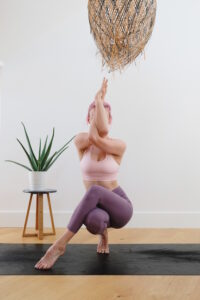
Pilates is renowned for its ability to strengthen the core muscles, improve stability, and enhance overall body control. In particular, Pilates mat workouts offer a convenient and effective way to develop core strength without the need for specialized equipment. In this article, we will explore the significance of Pilates for core strength, discuss the best workouts for developing a strong core, explore the exercises commonly included in Pilates mat workouts, and examine how Pilates actively engages the core muscles.
Does Pilates help with core strength?
Absolutely! Pilates is highly effective in building core strength. The core muscles, including the deep abdominal muscles, back muscles, and pelvic floor, play a crucial role in providing stability, maintaining posture, and supporting the spine. Pilates exercises are specifically designed to target and engage these core muscles, leading to improved core strength, stability, and overall body control.
What is the best workout for core strength?
Pilates is widely considered one of the best workouts for core strength. It focuses on controlled and precise movements that emphasize core engagement throughout each exercise. While there are various Pilates workouts available, including those that use specialized equipment, mat workouts are particularly effective for developing core strength. Mat workouts rely on bodyweight exercises, utilizing gravity and controlled movements to challenge and strengthen the core muscles.
What exercises are in Mat Pilates?
Mat Pilates incorporates a wide range of exercises that target the core muscles, while also engaging other muscle groups in the body. Some essential exercises commonly found in mat Pilates workouts include:
1. The Hundred: This exercise involves lying on your back, lifting your head and shoulders off the mat, and extending your legs. It requires deep core engagement and controlled arm movements.
2. Roll-Up: Starting in a lying position, the roll-up involves sequentially curling your spine to sit up and then returning back to the mat with control. It works the entire core and promotes spinal flexibility.
3. Pilates Plank: Similar to a traditional plank, the Pilates plank focuses on core stability and strength. It involves maintaining a straight line from head to toe while supporting your body on your forearms and toes.
4. Single Leg Stretch: This exercise is performed lying on your back, with one knee pulled towards the chest and the other leg extended. It challenges core stability while promoting flexibility and control.
5. Spine Twist: Sitting upright with legs extended, the spine twist involves rotating the torso from side to side while maintaining a stable core. It targets the oblique muscles and improves spinal mobility.
These are just a few examples of the exercises you may encounter in a Pilates mat workout. Each exercise is performed with a focus on core engagement, control, and precision.
Does Pilates engage your core?
Yes, Pilates actively engages and strengthens the core muscles. The fundamental principles of Pilates, such as concentration, control, and centering, all contribute to the activation of the core. Throughout Pilates exercises, emphasis is placed on maintaining proper alignment, engaging the deep abdominal muscles, and coordinating movement with breath. These intentional movements and muscle activations create a strong connection between the mind and body, resulting in an engaged and strengthened core.
In summary, Pilates mat workouts are a valuable tool for developing core strength. Pilates exercises target the core muscles, enhancing stability, promoting proper posture, and supporting the spine. Mat Pilates offers a range of exercises that engage the core while also benefiting other muscle groups. Pilates actively involves the core muscles through intentional movements, concentration, and control. Incorporating Pilates mat workouts into your fitness routine can lead to a stronger, more stable core and improved overall body control.